
REVIEWS IN INORGANIC CHEMISTRY
Scope & Guideline
Pioneering Knowledge in Inorganic Chemistry
Introduction
Aims and Scopes
- Inorganic Materials and Their Applications:
The journal covers the synthesis, characterization, and applications of various inorganic materials, including metal oxides, coordination compounds, and nanomaterials. It emphasizes their roles in environmental remediation, energy applications, and biomedical uses. - Catalysis and Photocatalysis:
A significant portion of the publications addresses the development and optimization of catalysts, particularly metal-organic frameworks (MOFs) and organometallic complexes, focusing on their efficiency in various chemical reactions and environmental applications. - Biological and Medicinal Inorganic Chemistry:
The journal highlights the medicinal applications of inorganic compounds, including their roles as anticancer agents and in drug delivery systems, showcasing the intersection of inorganic chemistry with health sciences. - Environmental Chemistry:
Reviews often focus on the environmental impact and remediation techniques using inorganic compounds, such as the removal of heavy metals and pollutants from water and soil, reflecting the journal's commitment to addressing global environmental challenges. - Green Chemistry and Sustainable Practices:
An emerging theme in the journal is the promotion of green synthesis methods for inorganic materials, emphasizing sustainability and eco-friendly practices in chemical research.
Trending and Emerging
- Nanomaterials and Their Multifunctional Applications:
Recent publications increasingly focus on the synthesis and application of nanomaterials, particularly in catalysis, environmental remediation, and biomedical fields, showcasing their versatility and importance in modern research. - Sustainable and Green Chemistry Approaches:
There is a growing emphasis on green synthesis methods for inorganic compounds, reflecting a broader trend in the scientific community towards sustainability and the reduction of environmental impact. - Advanced Photocatalytic Processes:
The journal is highlighting advancements in photocatalysis, particularly using metal oxides and nanocomposites for environmental applications, which is critical for addressing pollution and energy challenges. - Bioinorganic Chemistry and Medicinal Applications:
There is an increased focus on the role of inorganic compounds in medicinal chemistry, particularly their therapeutic applications in cancer treatment and as antimicrobial agents, indicating a significant intersection with health sciences. - Metal-Organic Frameworks (MOFs) and Their Versatility:
MOFs are becoming a focal point of research due to their diverse applications in gas storage, catalysis, and drug delivery systems, underscoring their importance in both theoretical and practical aspects of inorganic chemistry.
Declining or Waning
- Traditional Organometallic Chemistry:
There seems to be a decline in reviews focused solely on traditional organometallic compounds without a clear application context, as the journal shifts towards more innovative uses of these compounds in catalysis and materials science. - Basic Coordination Chemistry:
Papers that focus exclusively on the fundamental aspects of coordination chemistry without application to biological or environmental contexts are less frequent, indicating a move towards more interdisciplinary and applied research. - Inorganic Solid-State Chemistry:
There is a noticeable decrease in reviews related to purely solid-state inorganic chemistry, particularly those that do not engage with the implications of these materials in technology or health. - Classic Inorganic Synthesis:
The coverage of classic inorganic synthesis methods, particularly those that do not integrate modern techniques or applications, appears to be diminishing as the field evolves towards more innovative and sustainable practices.
Similar Journals

TRANSITION METAL CHEMISTRY
Navigating the Evolving Landscape of Transition MetalsTransition Metal Chemistry is a distinguished journal published by Springer, focusing on the latest advancements in the field of inorganic chemistry, materials science, and metals and alloys. With an impressive publication history dating back to 1975, this journal serves as an essential platform for researchers and professionals seeking to explore the complexities and innovations in transition metal chemistry. Transition Metal Chemistry holds a Q4 ranking in Inorganic Chemistry and positions itself in Q3 within both Materials Chemistry and Metals and Alloys categories, highlighting its evolving influence in these domains. With a Scopus ranking of #41 in Inorganic Chemistry and #56 in Materials Science, it provides readers with valuable insights into research trends and discoveries. Although it does not offer open access, its rigorous peer-review process ensures that only the most impactful and validated studies are published. By bridging theoretical concepts and practical applications, Transition Metal Chemistry plays a pivotal role in advancing scientific knowledge, attracting a diverse audience of researchers, students, and industry professionals committed to unraveling the complexities of transition metals.
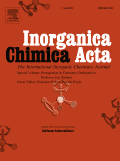
INORGANICA CHIMICA ACTA
Exploring Innovations in Materials and Theoretical ChemistryINORGANICA CHIMICA ACTA is a distinguished journal published by Elsevier Science SA, focusing on the dynamic fields of inorganic chemistry, materials chemistry, and physical and theoretical chemistry. Established in 1967, the journal continues to contribute to the scientific community with a commitment to high-quality research and innovation, boasting a 2023 Scopus ranking that places it at the forefront of its category, including a notable rank of #25 out of 79 in Inorganic Chemistry. Researchers can access a wealth of knowledge through its assemblage of influential articles; though it does not offer open access, the journal remains a key resource in the Netherlands and beyond. With an impact factor reflective of its rigorous editorial standards and engagement, INORGANICA CHIMICA ACTA is essential for scholars and professionals seeking to deepen their understanding and advance their research in these interconnected scientific domains.

Inorganics
Exploring the Frontiers of Inorganic ScienceInorganics is a vibrant, peer-reviewed Open Access journal dedicated to advancing the field of inorganic chemistry, published by MDPI since 2013. Based in Switzerland, this journal aims to provide a dynamic platform for researchers, professionals, and students to share groundbreaking findings, fostering collaboration and innovation within the global scientific community. With an impressive Q2 ranking in the category of Inorganic Chemistry as of 2023, Inorganics stands out as a significant conduit for high-quality research that spans a wide range of topics from coordination compounds to metal-organic frameworks. Its commitment to accessibility ensures that cutting-edge research can be accessed, utilized, and built upon by a diverse audience, thereby amplifying its impact. Join the conversation in Inorganics and contribute to the ever-evolving landscape of inorganic chemical research.

Journal of Organometallic Chemistry
Bridging Organic and Inorganic through Cutting-edge StudiesJournal of Organometallic Chemistry, published by Elsevier Science SA, serves as a pivotal platform for the dissemination of cutting-edge research in the field of organometallic chemistry. With a history spanning over half a century from 1963 to 2024, this esteemed journal presents innovative findings that intersect various disciplines, including Biochemistry, Inorganic Chemistry, Materials Chemistry, Organic Chemistry, and Physical and Theoretical Chemistry, each achieving a Q3 quartile ranking in 2023. Researchers focusing on the intricate relationships between organic compounds and metals will find this journal an invaluable resource for both theoretical exploration and practical applications. Although it does not offer Open Access, the journal maintains integrity and impact, evident through its Scopus ranking which places it within the competitive landscape of its respective categories. The ISSN for this journal is 0022-328X, and the E-ISSN is 1872-8561, affirming its relevance and accessibility in the academic community.

RUSSIAN JOURNAL OF COORDINATION CHEMISTRY
Illuminating the Path of Chemical InteractionsThe Russian Journal of Coordination Chemistry, published by Pleiades Publishing Inc, stands as a significant contribution to the field of coordination chemistry, focusing on the intricate relationships between metal ions and organic molecules. With an ISSN of 1070-3284 and an E-ISSN of 1608-3318, this journal has been curating high-quality research since its inception in 1996. Though it currently does not offer open access, the journal plays a crucial role in disseminating innovative findings, evidenced by its Q3 ranking in both Chemical Engineering and Chemistry categories as of 2023. With Scopus rankings placing it in the 40th percentile among general chemistry and chemical engineering journals, it demonstrates a commitment to advancing knowledge in these vital areas. The journal invites researchers, professionals, and students alike to engage with its comprehensive articles that explore both theoretical and practical aspects of coordination chemistry, supporting the development of new applications and techniques within the field.
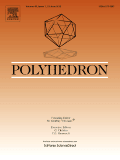
POLYHEDRON
Catalyzing Ideas in Inorganic and Materials Science.POLYHEDRON is a prestigious academic journal published by Pergamon-Elsevier Science Ltd, specializing in the fields of Inorganic Chemistry, Materials Chemistry, and Physical and Theoretical Chemistry. With its ISSN 0277-5387 and E-ISSN 1873-3719, the journal has been a significant outlet for groundbreaking research since its inception in 1982 and continues to be influential for scholars and practitioners. As of 2023, it holds a Q3 quartile ranking across its categorization, underscoring its impact within the scientific community with respectable Scopus Rankings that place it in the top percentiles of relevant fields. Situated in the United Kingdom, POLYHEDRON aims to foster the exchange of innovative ideas and findings related to polyhedral molecules and structures, making it an essential resource for researchers seeking to expand their knowledge and contribute to these dynamic areas of study. While currently not an Open Access journal, it remains committed to advancing education and research by providing quality content that serves both academic and practical applications.
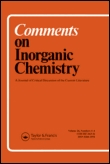
COMMENTS ON INORGANIC CHEMISTRY
Exploring the Depths of Inorganic ScienceCOMMENTS ON INORGANIC CHEMISTRY is a prestigious academic journal published by Taylor & Francis Ltd, specializing in the dynamic field of inorganic chemistry. With an impressive impact factor placing it in the Q1 category, this journal ranks #6 out of 79 in its field, reflecting its high influence and contribution to the discipline, with a remarkable percentile ranking of 93rd. Since its inception in 1981 and spanning publications until 2024, this journal serves as a crucial platform for researchers, professionals, and students to disseminate groundbreaking findings, review articles, and discussions on contemporary topics in inorganic chemistry. Although it is not an Open Access journal, the rigorous peer-review process ensures the publication of high-quality research. By bridging theoretical and practical aspects of inorganic chemistry, COMMENTS ON INORGANIC CHEMISTRY remains an essential resource for advancing knowledge and fostering innovation within the scientific community.
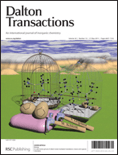
DALTON TRANSACTIONS
Connecting Minds in Inorganic ChemistryDALTON TRANSACTIONS, published by the esteemed Royal Society of Chemistry, is a premier journal in the field of Inorganic Chemistry, recognized for its significant contributions to advancing research and scholarship since its inception in 2002. With an impressive Impact Factor and ranked in the Q1 category, it holds a notable position at Rank #21 out of 79 within its Scopus category, highlighting its reputation for excellence and influence in the scientific community. This journal provides a platform for disseminating high-quality research, reviews, and communications related to all aspects of inorganic chemistry, fostering collaboration and innovation among researchers, professionals, and students alike. Although it does not offer open access, its robust selection process and commitment to scholarly integrity ensure that published works are of the highest standard. For those passionate about inorganic chemistry, DALTON TRANSACTIONS serves as an essential resource, fostering a deeper understanding of the field and its applications.

RUSSIAN JOURNAL OF INORGANIC CHEMISTRY
Fostering Insights for a Sustainable FutureThe Russian Journal of Inorganic Chemistry is a distinguished publication that delves into the fundamental and applied aspects of inorganic chemistry. Published by MAIK Nauka/Interperiodica/Springer, this journal has established itself as a vital resource for researchers, professionals, and students alike, contributing significantly to the fields of Inorganic Chemistry, Materials Science, and Physical and Theoretical Chemistry. With an ISSN of 0036-0236 and an E-ISSN of 1531-8613, the journal is indexed for easy access and citation. Though the journal currently operates under a subscription model, its commitment to disseminating high-quality research and fostering scientific discourse remains steadfast. The journal has been maintaining a consistent record since its inception, and its positioning in the Q3 quartile across various chemistry categories in 2023 underscores its relevance in the academic community. As it continues through its converged years from 1996 to 2024, the Russian Journal of Inorganic Chemistry plays a pivotal role in enhancing the understanding and advancement of inorganic chemistry, making it an indispensable tool for anyone engaged in this dynamic field.
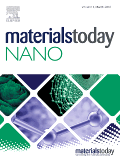
Materials Today Nano
Pioneering Discoveries in Nano-Materials for a Sustainable FutureMaterials Today Nano, published by Elsevier, is a premier academic journal dedicated to the forefront of nano-materials research, encompassing innovations and advancements in biomaterials, condensed matter physics, electronic, optical, and magnetic materials, as well as materials chemistry. With an impressive Q1 ranking across multiple categories, including biomaterials and materials chemistry, this journal serves as a essential platform for researchers, professionals, and students aiming to contribute to and stay informed on cutting-edge developments that push the boundaries of materials science. Its open access model allows for wider dissemination of high-impact findings, ensuring that the research reaches a global audience. Operating from the United Kingdom, Materials Today Nano plays a vital role in fostering interdisciplinary collaboration and advancing scientific understanding in this rapidly evolving field.